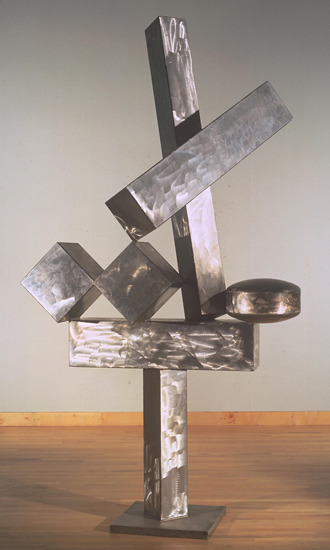As I researched different techniques for the eco-art exhibit at Cleveland's City Hall, I was reminded of repoussé, a French term meaning to "push back." This technique involves pressing and hammering a piece of metal from the back, using various sizes of punches and tools, to form a design in relief. Here is a visual:

When brainstorming a material to use for this technique, keeping in mind the theme for the art show was eco-art, my mentor and I came up with pop cans. The students brought in pop cans and we cut the tops and bottoms off and cut a line down the can so that the aluminum could be flattened. The students then proceeded to practice the technique of repoussé.
This was a collaborative piece and the students divided up the piece up into smaller sections and created different designs per section. When the repoussé was complete, they covered each individual piece with black ink to provide more contrast and to make the images pop. They then attached each section by drilling holes in each corner and tying them together with red wire. Here is the piece:
The students stood by their piece at the art show so proudly. They were asked if the piece was for sale several times. In fact, someone offered to pay them $300.00 for this piece. They were thrilled!











